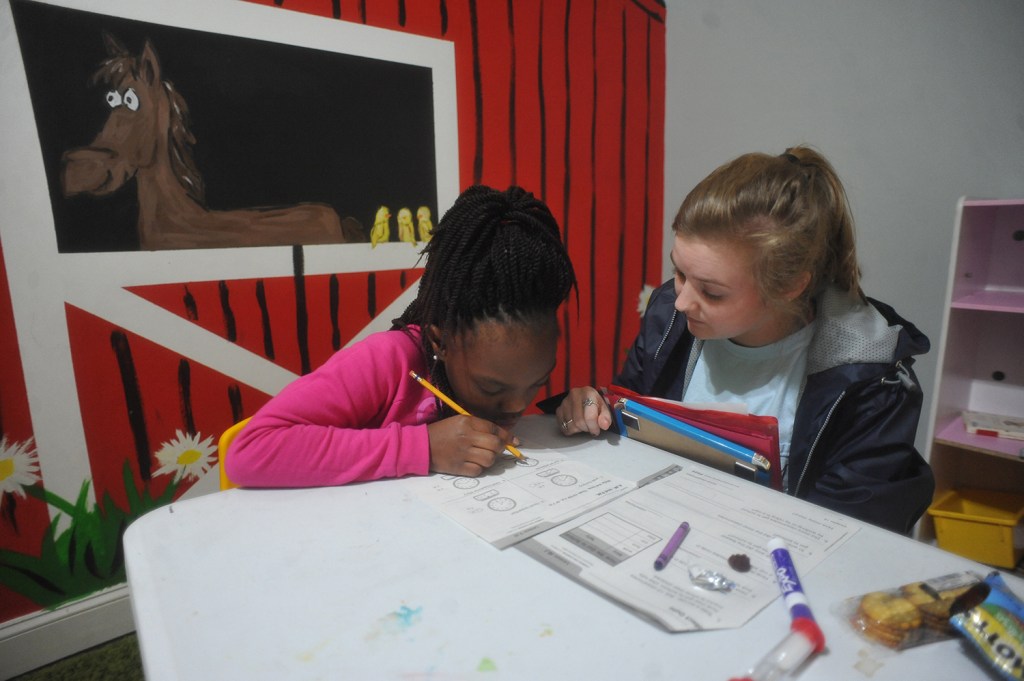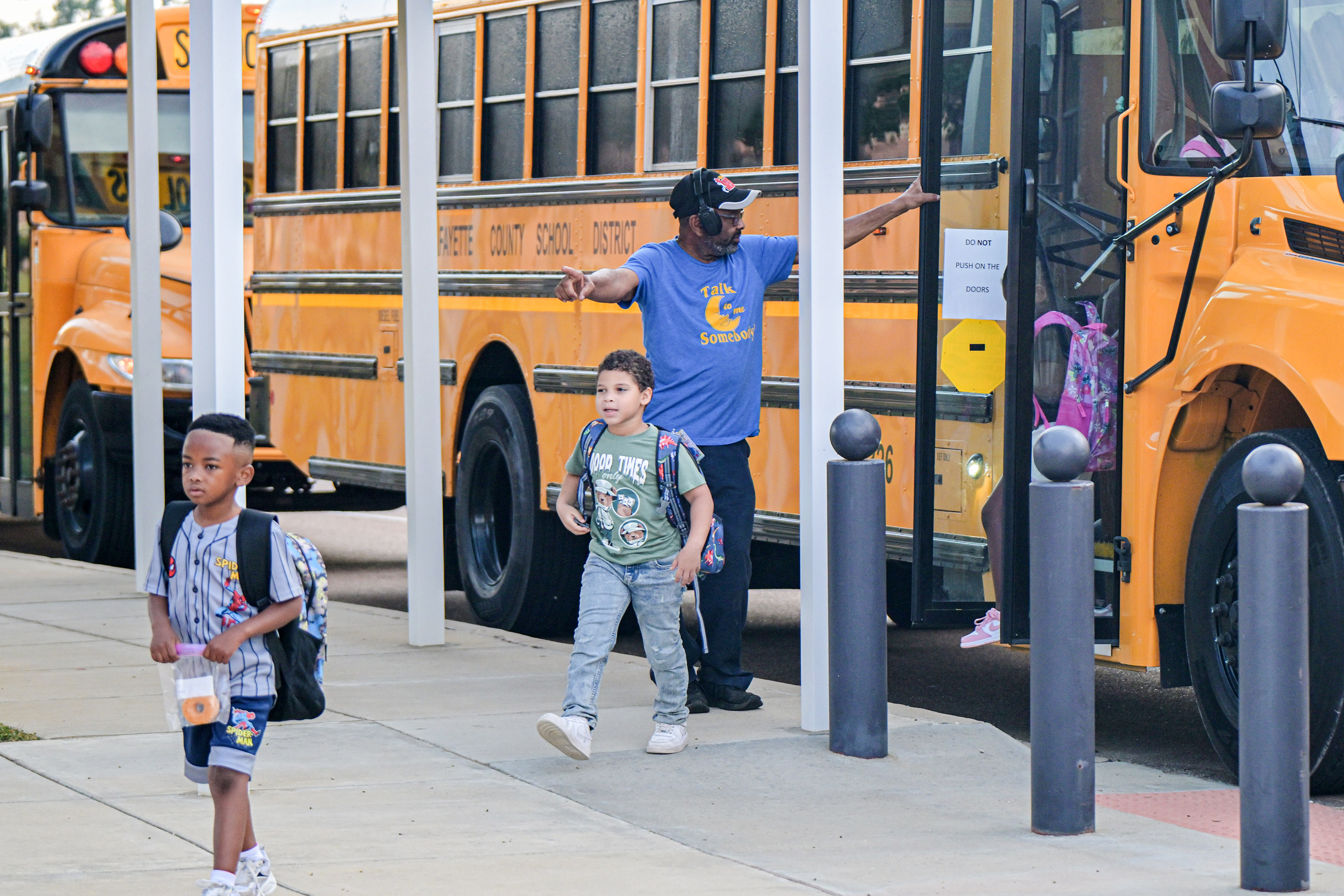Leap Frog marks 25 years of mentoring
Published 12:07 pm Tuesday, February 23, 2016

- Rayven Reynolds, left, works with volunteer Amy Sanderson at Leap Frog, at The Orchard in Oxford, Miss. on Monday, February 22, 2016.
For a quarter century, Leap Frog has been assisting at-risk students in the Oxford area with tutoring and mentoring programs geared toward first- through third-grade students to make sure they get off to a great start in their studies.
Leap Frog has grown from an outreach ministry program that began at St. Peter’s Episcopal Church with just a few second-graders to today serving 140 first- through third-graders from Oxford and Lafayette County school districts.
In addition to receiving funds from United Way, to help run the nonprofit, Leap Frog has two annual fundraisers. The Firecracker Bash is at The Lyric on the Fourth of July, while Pancakes with Santa is prior to Christmas and held at St. Peter’s Episcopal Church.
Trending
Classroom teachers refer students who may be falling behind academically and whose parents aren’t able to afford private tutoring. The students each receive one hour of one-on-one tutoring from volunteers who are paired with the student for the entire semester. The University of Mississippi provides more than 200 volunteers for the program.
On Mondays and Wednesdays, students from Lafayette County attend Leap Frog, while students from Oxford attend the program on Tuesdays and Thursdays.
Early beginnings
Leap Frog is now an established program that benefits area elementary students, but that wasn’t the case in the beginning. In fact, the program struggled tremendously when it first launched, according to the Rev. Duncan Gray III, who founded Leap Frog when he became rector at St. Peter’s Episcopal Church after seeing a similar program in Clarksdale in the late 1980s.
Gray came to St. Peter’s as rector in 1985 and sought an outreach program for the community. Over a two- or three-year period he searched the needs of the community.
“Somewhere along the line, I heard of a program at St. George’s Episcopal Church in Clarksdale,” Gray said. He brought Hamm Williston and Wanda Dean with him and on the way back, the three of them felt like “this was something we can do.”
Trending
But he needed to convince his flock that creating this program was a good idea.
He used the history of St. Peter’s as a platform.
“The parish hall that Leap Frog was initially housed in was the site of the first Head Start Center in Oxford and also the site of the earliest incarnation of what became the special-needs school in the Oxford School District,” Gray said. “I used that as my invitation to the congregation to get on board and reminded them that particular building had been built in part with a grant from the national church in the 1950s and part of the grant proposal from the priests was that students at Ole Miss needed a place to come and hear controversial speakers because in those days, there was a speaker ban on campus and speakers had to be vetted on campus.”
Gray said the grant made it clear that the building was also a student center for Ole Miss students to “be exposed to things they could not be exposed to on campus.”
Gray said the congregation was convinced the facility was meant to serve a wider community “and do things that may be controversial and crimp our style a little bit.”
Early struggles
Out of the planning Gray said Kris Mink, a former teacher, and Sylvia Robershaw, a teacher at the law school, both felt called to become part of the leadership team. Mink was the first director of the program and Robershaw was the assistant director.
A plan was developed, but Gray said they realized their tutoring team needed some tutors. “We didn’t think through that clearly,” Gray joked. “So we begged, bribed and pleaded to get as many tutors from the congregation as we could find. Some were very young and some were very old. It was a motley crew of folks who wanted to do the best we could.”
Another key to success was developing a trust with the school system. Gray said Carol Gray, who was the principal at what is now Bramlett Elementary School, “trusted us to do the right thing and have something to offer to these children.”
“We asked them to send us your worst and biggest problems and we’ll transform them, being the miracle workers we’d be,” Gray said.
That initial class began with 20 students.
“And with untrained and inexperienced tutors with kids who had education, as well as other problems, it overwhelmed us and we struggled,” Gray said.
He said there was a lot of self-doubt and a lot of despair and, “we felt that maybe we had misread God’s purposes.” The first-year program finished with about a dozen students.
“Somewhere along the line we said ‘maybe we’re not equipped to handle the most challenging,’” Gray said. They redesigned the criteria “for the children we could handle.”
UM students help
Word of mouth about the program spread through the university in the second year and the program picked up college student tutors.
“Their social needs with our need for tutors merged nicely,” Gray said.
In the third year, then-director Rosie McDavid moved the tutoring exclusively to the college students.
Results from a study that compared students who went through the program and those that did not proved positive that the program was working and “we had reassurance we were on the right track,” Gray said. It helped gain funding and the tutoring and mentoring program moved from an outreach ministry to a United Way agency.
Gray, who grew up in Oxford and whose father was rector of St. Peter’s in the 1950s and ’60s, left Oxford in the ’90s and became bishop of the Diocese of Mississippi in 2003. Currently, he is retired and living in New Orleans but has plans to return and retire in Oxford within a couple of years. He still has family ties in Oxford. His son is Duncan Gray IV, an assistant principal in the Oxford School District.
He is pleased with where Leap Frog has gone over the last 25 years from its humble beginning, but refuses to take full credit for its success.
“We kind of got it off the ground, but there were some enormously creative people afterwards, who have more creativity in their fingers than I do in my entire body,” Gray said. “Certain people have certain gifts and folks at St. Peter’s, after some initial question and concern within a year, got on board fully and owned it and over the years rejoiced in it and today can be proud of it.”





